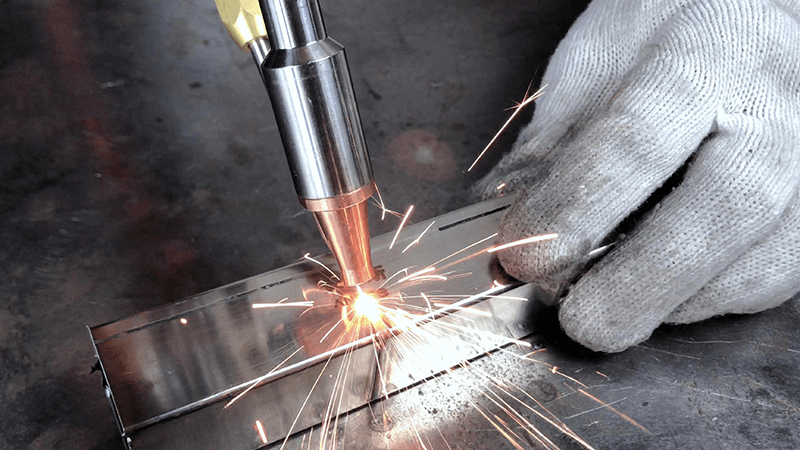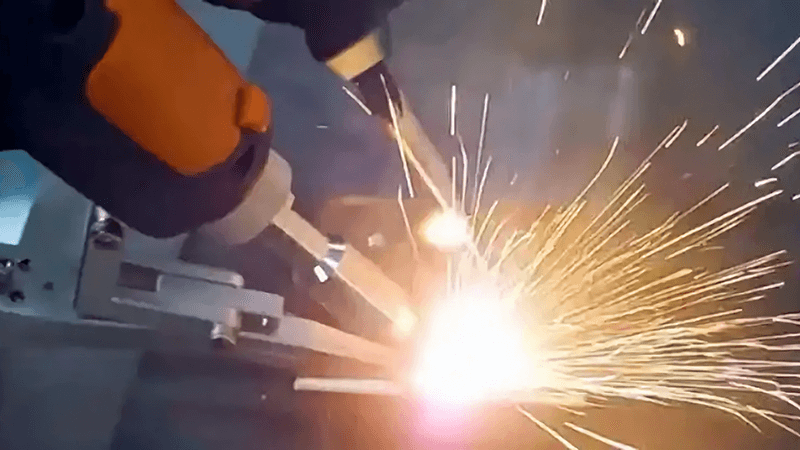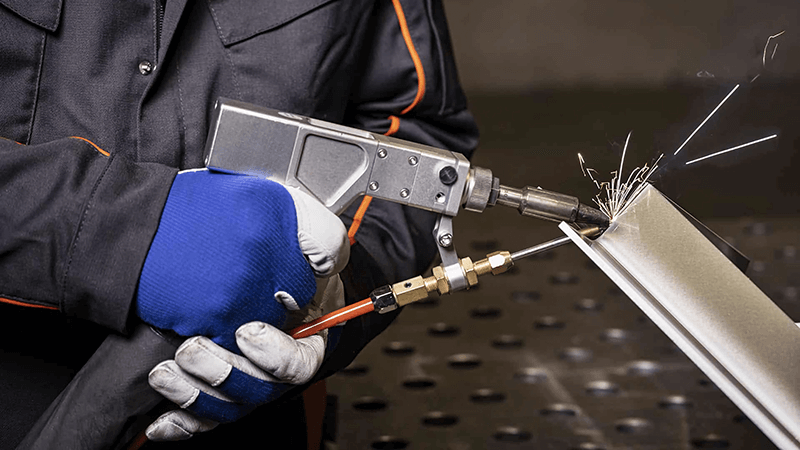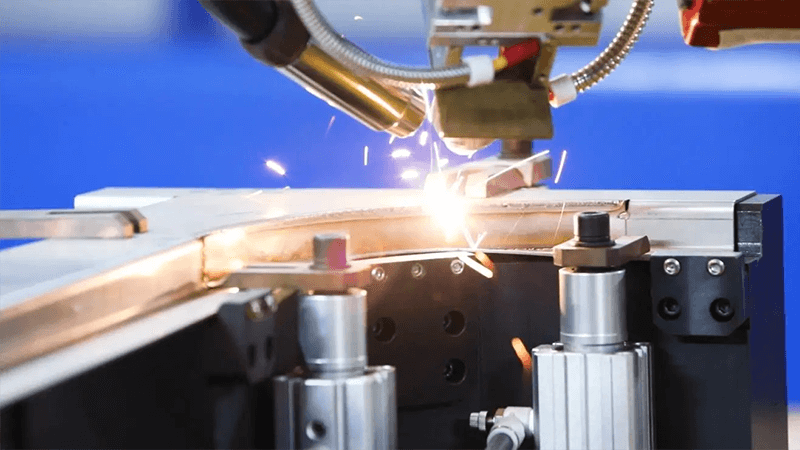I see many buyers face the same pain. They get slow welds, heavy spatter, and heat distortion. They lose yield and time. They also waste budget on frequent service. I want to fix that with clear facts and simple choices.
I primarily use a fiber laser welding machine. It gives clean, fast, and stable welds with low heat input. It works on stainless steel, carbon steel, aluminum, brass, and more. It needs little service and has low running cost. It fits high-volume jobs and precision parts.
I write this from Kirin Laser’s view. I build and OEM laser machines for global partners. I focus on precision, uptime, and easy support. I will answer each question in a direct, practical way. I will also share a real story from aerospace to make it clear.

Which type of welding machine is recommended to use?
You may feel stuck between TIG, MIG, and new laser tech. You need speed, but you fear distortion. You need quality, but you fear complex setup. I know that stress. I had to choose for my own lines too.
I recommend a fiber laser welding machine for most precision and high-volume cases. It gives narrow heat-affected zones, low spatter, and strong repeatability. It also runs fast and saves on maintenance. It works best when parts fit well and joints are clean.
Why I recommend fiber laser welding
I recommend fiber laser welding1 because it solves common pain in modern production. It gives high energy density2 and a small spot. It puts heat where it matters. It keeps nearby zones cool. So, parts do not warp as much. That is key for thin walls and tight assemblies. It also makes welds look good, with less post-process work. This saves both time and money.
Where it fits best
Fiber laser welding fits lines that need both speed and consistency. It shines in stainless steel enclosures, battery tabs, medical tools, sensors, and aerospace brackets. It also helps with aluminum, as long as you match power, wobble patterns, and wire feed if needed. The process benefits from good fixturing. It also needs clean edges. I design our OEM fixtures to be fast to load and easy to keep clean.
Ease of use and training
Many teams worry about training. I get it. TIG needs high skill. MIG is simpler but still needs practice. Fiber laser welding with a handheld head or a simple jig lowers the learning curve. The arc is not exposed like TIG or MIG, and the process window is wide. We ship parameter recipes by material and thickness. Your team can start in hours, not weeks. We also offer remote camera support. It speeds up tuning and reduces downtime.
Maintenance and uptime
Uptime drives profit. That is why I push fiber sources. They are sealed, air-cooled or water-cooled units with long diodes life. The optical path is simple and stable. You change a protective lens and a nozzle as routine. There is no electrode to grind. There is no shielding gas mix to chase, unless your part needs it. Many users run one head for a full shift without stoppage. That is hard to achieve with many arc options.
Cost and ROI
I will be direct. The initial machine price is higher than a basic MIG set. Yet the cost per part3 often wins. You save on rework, grinding, and heat distortion scrap. You reduce fixture damage and cleanup. You ship more parts per day. Our customers often see payback in 6 to 12 months in mid-volume lines. High-volume lines can do better.
Quick comparison
| Factor | Fiber Laser | TIG | MIG |
|---|---|---|---|
| Heat input | Low | Medium | Medium |
| Speed | High | Low | Medium |
| Spatter | Very low | Very low | Medium |
| Skill need | Moderate | High | Medium |
| Post-process | Minimal | Minimal | Medium |
| ROI window | Short | Long | Medium |
I build and OEM laser machines, plus I also supply laser cleaning and laser marking systems. So I see the full chain. Clean parts and clear marks lift yield. Fiber laser welding fits with this chain. That is why I recommend it as the core welding choice in many plants.

What is the most used welding machine?
You see many machines on the market. The choice is hard. Your team asks for speed and easy training. Your customers ask for good looks and tight tolerances. You want one core tool that does not fail you. I tested many. I track data.
Across precision manufacturing clients, the most used welding machine in my projects is the fiber laser welder. In heavy fab shops, MIG still leads. In high-precision and mixed-metal work, fiber laser wins. Usage follows quality demand, not only price.
Segment view from my projects
I run OEM programs for distributors and integrators. I see usage patterns in different markets. In mass metal furniture and heavy frames, MIG dominates because it is cheap and robust. In consumer electronics, appliances, medical, EV, and aerospace, fiber laser use is growing fast. These sectors care about small heat input and repeatable, pretty seams. They also link welding with upstream laser cutting and downstream laser marking. So, fiber laser welding plugs in well.
Why usage is shifting
The shift comes from three forces. First, parts get thinner and lighter. So, old processes cause heat distortion4 and extra grinding. Second, demand for clean looks rises. Buyers want nice fillets and small beads. Third, labor is tight. Teams need tools with shorter training. Fiber laser addresses each point. It runs with high speed and low heat. It makes neat beads. It has recipe-driven setup. So it becomes the most used unit in many precision lines.
Data points I track
I track utilization hours5 per cell, scrap rates, and rework hours. When we replace TIG with fiber laser on thin stainless, scrap drops by 30 to 60 percent. Rework for discoloration or burn-through falls close to zero. Net output per shift increases by 20 to 50 percent, based on part mix. Service hours drop because we do not swap consumables often. These numbers make managers choose fiber laser again for the next cell.
Training and safety note
I care about safety. Fiber lasers need proper eyewear and enclosures or Class-4 rules. We supply shields, interlocks, and fume control. With that in place, the operation is simple. The operator works with a stable, bright spot and a wobble pattern that improves tolerance. I like to keep motions simple. I use smart fixtures and wire feed as needed. The team focuses on loading, aiming, and checking. It is repeatable and calm.
Short usage summary table
| Segment | Most used machine | Why |
|---|---|---|
| Heavy frames | MIG | Low cost, tolerant to gaps |
| Precision sheet | Fiber laser | Low heat, high speed, clean seam |
| Medical | Fiber laser | Low distortion, clean surface |
| Aerospace | Fiber laser | Tight tolerances, traceable quality |
| Repair/MRO | TIG/MIG + laser cleaning | Field tolerance, surface prep |
I do not say fiber laser6 fits every weld. Thick sections or large gaps may suit MIG with fill. But when quality and speed matter, fiber laser becomes the most used machine in my work.

What is the most commonly used type of welding?
People ask me to name one welding type. They want a clear answer. The truth is, the answer depends on the part. In general fab shops, MIG leads. In precision and high-mix shops, fiber laser grows fast. I will explain my take.
In general fabrication, GMAW (MIG) is still the most commonly used welding type due to cost and tolerance to fit-up. In precision manufacturing, fiber laser welding is becoming the most common choice because it reduces heat, increases speed, and improves consistency.
Why MIG leads in general
MIG has a simple setup. It handles larger gaps. The power source is cheap. Wire and gas are easy to source. Many techs know the process. For beams, frames, and thick parts, this is enough. Shops can hire fast and produce at a fair pace. I do not fight this reality. I sell fiber lasers, but I respect the place of MIG.
Why fiber laser rises in precision work
Precision work needs narrow beads, low heat, and fast cycle time. Fiber laser welding checks each box. The spot is small. The power is stable. The wobble head lets me bridge small gaps. With wire feed, I can add filler and keep the low heat zone. I cut post-process steps. I cut discoloration with gas or laser cleaning before and after. I document parameters for traceability. These factors make fiber laser the common choice in my precision lines.
Process selection rules I use
I use a simple rule set to decide the welding type7:
- If the part is thin, I use fiber laser.
- If the joint needs clean looks, I use fiber laser.
- If the fit-up is poor and the section is thick, I use MIG.
- If I need very fine control on small parts, I may use TIG, but I compare cycle time and warping.
- If the part is aluminum with tight quality needs, I use fiber laser with wobble and wire.
- If the line needs high OEE8, I pick fiber laser first.
Real case from aerospace
A client in aerospace had high scrap from heat distortion9 with TIG on thin brackets. They needed a strong seam and a clean look. They also needed stable dimensions after welding. We switched to a fiber laser welding10 machine with a 3 kW source and a wobble head. We set a recipe, optimized gas, and used simple clamps. Scrap fell by more than half. Rework fell to near zero. Output rose, and quality audits became easier. The change paid for itself in less than a year.
Quick process table
| Welding type | Best use | Limits |
|---|---|---|
| MIG | Thick and gapped joints | More spatter, heat input |
| TIG | High control, small runs | Slow, skill-heavy |
| Fiber laser | Thin to medium, high precision | Fit-up needs, safety class |
| Resistance | Overlaps, sheet | Joint design limits |
So, I say MIG is still the most common type in broad fab. But in precision and growth sectors, fiber laser is fast becoming the common choice.

What is the most popular welder?
People often ask me for the most popular welder, as if there is one for all. I understand why. Budgets are tight. Teams want one spec to buy. I will share what I see across orders and OEM programs.
In my sales and OEM projects, the most popular welder for precision manufacturing is the handheld fiber laser welder with wobble head, 1–3 kW. It balances speed, ease of training, and surface quality. For heavy fabrication, MIG sets remain popular.
Why handheld fiber laser is popular
The handheld fiber laser welder is fast to deploy. It needs small floor space. It works on common alloys with quick recipes. The wobble head makes it forgiving on small gaps. Operators learn the tool in hours. The seam looks clean. Many buyers run it as a bridge step before full automation. It becomes the popular choice because it hits a sweet spot of cost, speed, and quality.
Where I see the strongest demand
I see strong demand in sheet metal shops, appliance parts, kitchenware, HVAC, EV brackets, and small aerospace components. Many of these parts need neat seams and low heat. The handheld unit covers a wide range. When volume grows, customers ask for semi-automated cells11 with fixtures and part sensors. We design both. We often bundle laser cleaning12 for prep and laser marking for traceability. This creates a clean, closed process from raw to finished part.
Specs that work well
Most users pick 1 kW to 2 kW for thin to medium sections. Some go to 3 kW for thicker joints or higher speed. A wobble head13 at 1–5 mm swing covers most joints. Wire feed helps fill small gaps. Gas choices are simple: argon or nitrogen depending on the alloy and the look. We include protective lenses and quick-change nozzles. A clear touchscreen lets me store and recall recipes. These details keep the cell running.
Service and uptime
This is a key reason for popularity. The fiber source is sealed. There are few moving parts. The head is robust. You replace wear items on a schedule. We can diagnose most issues with remote tools. We stock parts and ship fast. This mix reduces fear and keeps your line on time. Popular tools are not only easy to use. They are easy to support. That is the real test.
Popular choices table
| Use case | Popular welder | Typical power | Notes |
|---|---|---|---|
| Thin stainless seams | Handheld fiber laser | 1–1.5 kW | Clean look, fast |
| Aluminum brackets | Handheld fiber + wire | 1.5–3 kW | Wobble helps |
| Mixed metals trials | Fiber laser cell | 1–2 kW | Recipe control |
| Heavy frames | MIG | 250–350 A | Cost-driven |
From my view at Kirin Laser, the handheld fiber laser welder14 is the most popular in precision work. It often starts the journey, then teams scale to automated stations as orders grow.

Conclusion
I use fiber laser welding15 as my primary choice because it gives clean, fast, and stable results with low heat. It fits precision parts and high-volume lines. In broad fab, MIG still holds ground, but in high-value sectors, fiber laser leads. I help partners set clear recipes, add simple fixtures, and build support plans. This keeps quality high and costs low. If you want to compare setups or run a sample, I can help with tests and data.
-
Explore the advantages of fiber laser welding, including efficiency, precision, and cost-effectiveness for modern production. ↩
-
Learn how high energy density improves welding quality and reduces heat distortion, making it ideal for thin materials. ↩
-
Discover how fiber laser welding can lower the cost per part through reduced rework and increased production efficiency. ↩
-
Learn effective strategies to reduce heat distortion in welding, ensuring better quality and less rework in your projects. ↩
-
Discover best practices for tracking utilization hours to optimize efficiency and productivity in your manufacturing operations. ↩
-
Explore the benefits of fiber laser welding, including speed, precision, and reduced heat input, which are crucial for modern manufacturing. ↩
-
Discover the various welding types and their specific applications to make informed decisions for your projects. ↩
-
Understand the concept of Overall Equipment Effectiveness (OEE) and its importance in optimizing manufacturing processes. ↩
-
Learn effective strategies to minimize scrap and improve quality in welding processes, especially in aerospace applications. ↩
-
Explore the advantages of fiber laser welding, including precision and efficiency, to enhance your understanding of modern welding techniques. ↩
-
Learn how semi-automated cells enhance efficiency and precision in welding operations. ↩
-
Find out how laser cleaning prepares surfaces for welding, ensuring better results and traceability. ↩
-
Discover how a wobble head improves welding quality by accommodating small gaps. ↩
-
Explore the advantages of handheld fiber laser welders, including speed, cost-effectiveness, and ease of use. ↩
-
Find the best laser welding machine and laser welding solutions from Kirin Laser, clicking this link to get all your needs for your business. ↩





